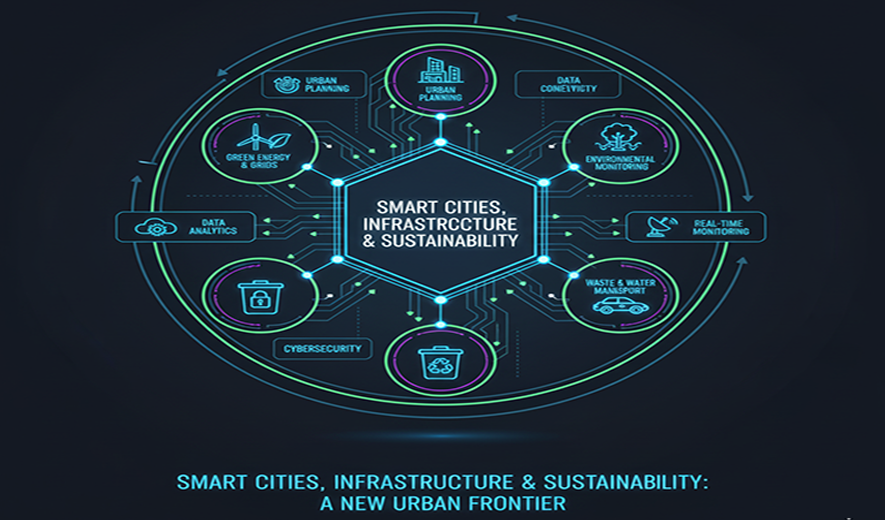
Smart Cities, Infrastructure & Sustainability
Smart cities leverage data and technology to create more efficient, sustainable, and livable urban environments. By integrating digital solutions into core infrastructure, cities can address challenges stemming from rapid urbanization, climate change, and resource management. The pursuit of a smarter city is intrinsically linked with achieving greater sustainability.
Smart infrastructure: The foundation of sustainable cities
- Smart grids: These intelligent electricity networks optimize energy distribution and reduce waste. By collecting data on usage patterns, smart grids can proactively balance loads, manage the integration of intermittent renewable sources like solar and wind, and respond to demand fluctuations to prevent outages. For example, the city of Copenhagen uses smart grids to reduce carbon emissions from its heating systems.
- Smart transportation: Technologies like intelligent traffic signals, real-time parking availability updates, and integrated public transport systems help reduce congestion and lower carbon emissions. In Barcelona, smart parking and dynamic traffic management reduce traffic and pollution. Many cities are also investing in electric vehicle charging infrastructure and incentivizing the use of electric buses and cars.
- Smart water management: IoT sensors and analytics help monitor water quality, detect leaks, and optimize distribution. This minimizes wastage and helps cities manage water resources more effectively. Singapore, for instance, uses this technology to track water quality and detect leaks in its distribution network.
- Smart waste management: Sensors placed in waste bins monitor fill levels and trigger alerts when collection is needed, which optimizes collection routes and schedules. This reduces fuel consumption, minimizes operational costs, and keeps public areas cleaner. Indore, India, has been recognized for its comprehensive waste management system, which includes door-to-door waste segregation and converting organic waste into biofuel.
The symbiotic relationship between infrastructure and sustainability
The success of a sustainable city depends on the smart and holistic design of its infrastructure.
- Environmental monitoring: IoT sensors can measure air and water quality, noise levels, and other environmental factors. This data helps city officials identify sources of pollution and implement targeted strategies for a healthier urban environment.
- Green infrastructure: Sustainable infrastructure also includes green spaces such as parks, green roofs, and urban forests that help reduce the urban heat island effect, improve air quality, and enhance biodiversity.
- Resource optimization: The data-driven nature of smart cities helps optimize the use of natural resources. By analyzing consumption patterns, cities can make more informed decisions about resource allocation, leading to reduced waste and a more sustainable approach to growth.
Challenges and considerations
While smart and sustainable cities offer immense benefits, they also face significant challenges.
- High costs: The initial investment required for new technology and infrastructure can be a major barrier, though public-private partnerships can help.
- Data privacy and security: The extensive collection of data raises concerns about security and privacy that must be addressed with robust cybersecurity measures.
- Digital divide: There is a risk that populations with limited access to technology could be left behind, necessitating policies to ensure digital equity and inclusion.
- Integration and interoperability: Ensuring that different technologies from various vendors work seamlessly together is crucial for a cohesive system.
